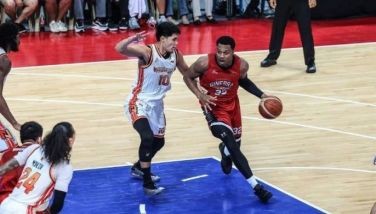- Philstar.com
- The Philippine Star
- Pilipino Star Ngayon
- The Freeman
- Pang-Masa
- Banat
- Interaksyon
- Coupons
SUPPORT PHILSTAR
About Us |
Contact Us |
Advertise |
Privacy Policy |
Member Agreement |
Copyright Notice
Copyright © 2025. Philstar Global Corp. All Rights Reserved
X
+ Follow ASSOCIATED BANK TARLAC BRANCH Tag
Array
(
[results] => Array
(
[0] => Array
(
[ArticleID] => 274487
[Title] => Immaterial element
[Summary] => To be liable for violation of the Bouncing Checks Law (B.P. 22), the prosecution must prove that the maker, drawer or issuer of the bad check has knowledge that he does not have sufficient funds in or credit with the drawee bank at the time he issued the check. But if the drawer or issuer of a check tells the payee from the very beginning that he does not have sufficient funds in the drawee bank, must the prosecution still prove such knowledge? And is the drawer or issuer still liable for violation of the Bouncing Checks Law?
[DatePublished] => 2005-04-19 00:00:00
[ColumnID] => 133340
[Focus] => 0
[AuthorID] => 1804883
[AuthorName] => Jose C. Sison
[SectionName] => Opinion
[SectionUrl] => opinion
[URL] =>
)
)
)
ASSOCIATED BANK TARLAC BRANCH
Array
(
[results] => Array
(
[0] => Array
(
[ArticleID] => 274487
[Title] => Immaterial element
[Summary] => To be liable for violation of the Bouncing Checks Law (B.P. 22), the prosecution must prove that the maker, drawer or issuer of the bad check has knowledge that he does not have sufficient funds in or credit with the drawee bank at the time he issued the check. But if the drawer or issuer of a check tells the payee from the very beginning that he does not have sufficient funds in the drawee bank, must the prosecution still prove such knowledge? And is the drawer or issuer still liable for violation of the Bouncing Checks Law?
[DatePublished] => 2005-04-19 00:00:00
[ColumnID] => 133340
[Focus] => 0
[AuthorID] => 1804883
[AuthorName] => Jose C. Sison
[SectionName] => Opinion
[SectionUrl] => opinion
[URL] =>
)
)
)
abtest

By A LAW EACH DAY (KEEPS TROUBLE AWAY) | By Jose C. Sison | April 19, 2005 - 12:00am
Recommended
The secretary-general of the House of Representatives is expected to act on impeachment complaints filed against Vice President Sara Duterte once Congress resumes session next week.
16 hours ago
The San Miguel Beermen have been eliminated from playoff contention in the 2025 East Asia Super League (EASL) season after bowing against the Hiroshima Dragonflies, 94-63, Wednesday at the Hiroshima Sun Plaza in Japan.
22 hours ago
With 41% of Filipinos backing impeachment complaints against Vice President Sara Duterte, some House lawmakers said the survey results send a clear message: “Filipinos are watching.”
1 day ago
President Ferdinand Marcos Jr. and other high officials wished devotees of the Feast of the Black Nazarene a reflective occasion, hoping they would forge a deeper relationship with God.
1 day ago
Following costly errors in the end-game of their close loss to NorthPort, Barangay Ginebra import Justin Brownlee is keeping his sights forward.
1 day ago
Lotto Jan 9, 2025
EZ2 - 20 7
SUERTRES - 9 7 1
6D Lotto - 3 1 1 9 9 4
6/42 Lotto - 25 4 16 321 22 34
P15,000,326.00
6/49 Super Lotto - 22 4 20 8 4 5
P15,840,000.00
Forex
February 12, 2018
- 12:00 am
- 12:00 am
1$ : P51.66










